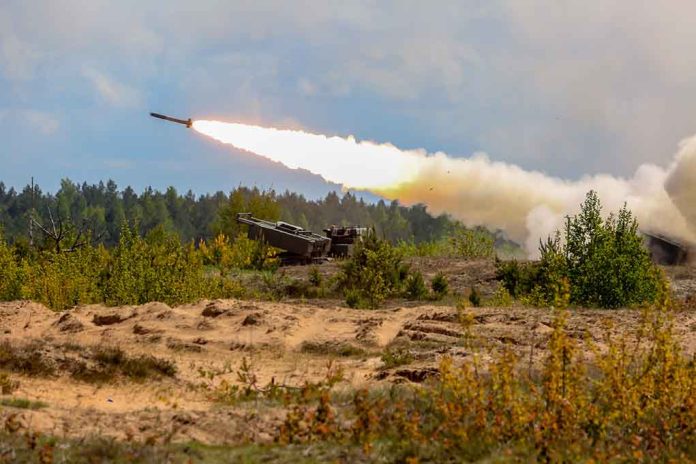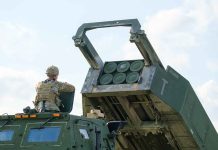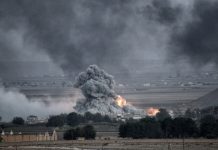
Israeli Air Force’s daring strike eliminated Hezbollah leader Hassan Nasrallah.
At a Glance
- An Israeli airstrike killed Hezbollah leader Hassan Nasrallah.
- The strike targeted an underground Hezbollah compound in Dahiyeh, Beirut.
- Multiple high-rise apartment towers were leveled, causing significant destruction.
- Israel released videos showing at least eight F-15I warplanes involved in the strike.
- The bombs used were likely 2,000-pound BLU-109 penetrator bombs with JDAM precision guidance systems.
Israeli Air Force F-15I Ra’am Jets Strike Hezbollah Command Center in Beirut, Killing Leaders
The Israeli Air Force’s F-15I Ra’am jets executed a precision operation on September 27, 2024, targeting Hezbollah’s underground command center in Dahiyeh, Beirut. Codenamed “New Order,” this high-stakes mission was spearheaded by the 69th Squadron from Hatzerim Airbase. Armed with GPS-guided GBU-31(V)3/B JDAM bunker-buster bombs, the efforts culminated in the deaths of Hezbollah leaders Hassan Nasrallah and his deputy, Ali Karaki.
Residents reported hearing up to 10 explosions as multiple high-rise apartment towers were reduced to rubble. The bombs, known as “bunker busters,” recently transferred to Israel by the U.S., resulted in a destruction area spanning over a city block. Onlookers, and residents rushed to the site to inspect the damage and search for missing relatives. While some people were still missing, six deaths and dozens of injuries have been confirmed.
Hezbollah workers were seen excavating the site, yet state security and investigators were noticeably absent. The destruction inflicted significant emotional distress among the onlookers, and supporters of Nasrallah expressed their continued morale and commitment to the struggle. This assassination marked a significant escalation in Israel’s campaign against Hezbollah.
🇮🇱 The Israeli Defense Forces (IDF) conducted another "precision strike" in the Dahiyeh area of Beirut, where Hezbollah leader Hassan Nasrallah was killed on Friday, according to the IDF press service.
— Sputnik (@SputnikInt) September 28, 2024
Expert Analysis on the Bombs Used
Experts suggest the bombs used in the operation were likely 2,000-pound BLU-109 penetrator bombs with JDAM precision guidance systems. These sophisticated munitions facilitated the strike’s effectiveness, ensuring that Hezbollah’s underground command center was thoroughly obliterated. Israel’s military released radio communications of the strike’s commanding officers, further solidifying the operation’s transparency and the precision involved.
Senior Israeli Air Force officials say the strike in Beirut yesterday killing Hezbollah terror chief Hassan Nasrallah went smoothly with no errors or enemy fire on the IAF warplanes.
"Everything we planned was executed precisely, with no errors, both in intelligence, the… pic.twitter.com/d9BaNy6UUF
— Emanuel (Mannie) Fabian (@manniefabian) September 28, 2024
Continued Tensions and Military Actions
The aftermath included Israeli airstrikes targeting areas near Beirut again on Saturday evening, as the conflict continues to escalate. Both Hezbollah and Israel have vowed to persist in their military endeavors. Hezbollah, in solidarity with Hamas, began firing into northern Israel by October 8. Israeli military efforts remain relentless, conducting numerous strikes on Hezbollah and its weapons caches, underscoring a drastic shift in the regional power dynamics.
The strategic killing of Nasrallah is anticipated to have far-reaching repercussions. As Prime Minister Benjamin Netanyahu emphasized, this action aimed to dismantle Hezbollah’s leadership and prevent Nasrallah from rebuilding. Consequently, the conflict threatens to engulf the region, with over 500,000 people displaced and increasing fatalities reported. President Biden’s call for Nasrallah’s assassination to be seen as a measure of justice, while urging for a diplomatic resolution, highlights the delicate balance required in navigating the fallout of this operation.






















